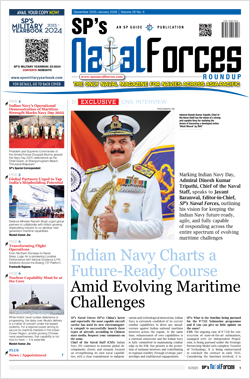INDIAN ARMED FORCES CHIEFS ON OUR RELENTLESS AND FOCUSED PUBLISHING EFFORTS

The insightful articles, inspiring narrations and analytical perspectives presented by the Editorial Team, establish an alluring connect with the reader. My compliments and best wishes to SP Guide Publications.

"Over the past 60 years, the growth of SP Guide Publications has mirrored the rising stature of Indian Navy. Its well-researched and informative magazines on Defence and Aerospace sector have served to shape an educated opinion of our military personnel, policy makers and the public alike. I wish SP's Publication team continued success, fair winds and following seas in all future endeavour!"

Since, its inception in 1964, SP Guide Publications has consistently demonstrated commitment to high-quality journalism in the aerospace and defence sectors, earning a well-deserved reputation as Asia's largest media house in this domain. I wish SP Guide Publications continued success in its pursuit of excellence.
- Global Partners Urged to Tap India's Shipbuilding Potential: Rajnath Singh at Samudra Utkarsh
- All about HAMMER Smart Precision Guided Weapon in India — “BEL-Safran Collaboration”
- India, Germany deepen defence ties as High Defence Committee charts ambitious plan
- G20 Summit: A Sign of Global Fracture
- True strategic autonomy will come only when our code is as indigenous as our hardware: Rajnath Singh
- India–Israel Joint Working Group Meeting on defence cooperation to boost technology sharing and co-development
Samudrayan and Indigenous AERV
First unmanned trial of MATSYA 6000 and the induction of the first set of indigenously developed next-generation Armoured Engineer Reconnaissance Vehicle (AERV) will contribute immensely to Atmanirbhar Bharat
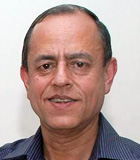 |
The Author is Former Director General of Information Systems and A Special Forces Veteran, Indian Army |
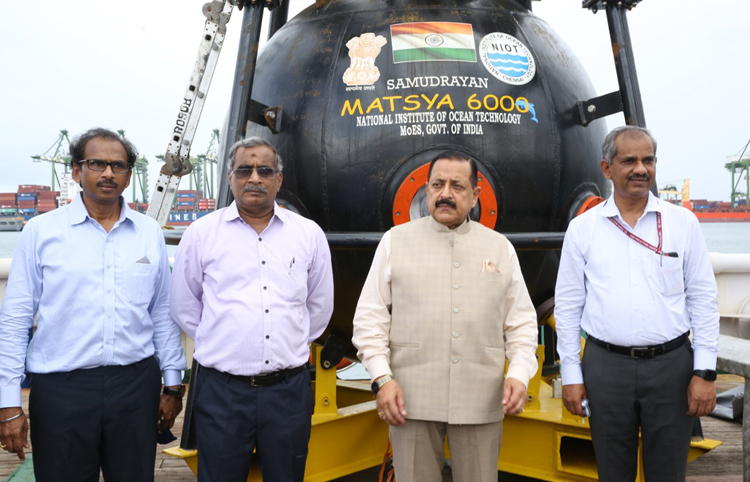
On October 29, 2021, India launched its deep sea mission ‘Samudrayan’ (meaning Sea Craft). Minister of State (MoS) for Science and Technology Jitendra Singh said three scientists will be sent to a depth of 5,000 metres (5 km) in the sea to find hidden mineral deposits. He also said, “With the launch of this Unique Ocean Mission, India joins the elite club of nations such as the USA, Russia, Japan, France and China to have such underwater vehicles for carrying out subsea activities." Samudrayan has been undertaken by the National Institute of Ocean Technology (NIOT). It will be a part of the Deep Ocean Mission, which will be implemented at a total budget 4,077 crore for five years.
Developed and designed by the Indian Space Research Organisation (ISRO), the preliminary design of the manned submersible MATSYA 6000 under the Samudrayan project has already been completed. The MATSYA 6000 can carry three people in a titanium alloy personnel sphere of a 2.1-metre diameter enclosed space with an endurance of 12 hours and an additional 96 hours in case of an emergency situation. Sea trials of 500 metre rated shallow water version of the manned submersible are expected to take place in the last quarter of 2022. The MATSYA 6000 will be ready for trials by the second quarter of 2024.
The MATSYA 6000 will be ready for trials by the second quarter of 2024
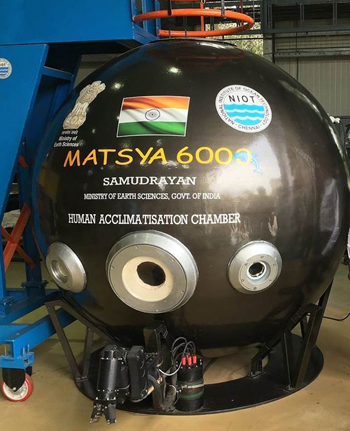
The primary aim of the mission is to explore and extract poly-metallic nodules (PMN) which are composed of minerals like manganese, nickel, cobalt, copper and iron hydroxide. The metals are useful in manufacturing of electronic devices, smart-phones, batteries and solar panels. India has an Exclusive Economic Zone (EEZ) of 2,200,000 km² which is unexplored. India has been allocated a site of 150,000 km² (58,000 sq mi) in Central Indian Ocean Basin (CIOB) by the United Nations International Seabed Authority (ISA) for the exploitation of PMN which is an amalgamation of iron and manganese hydroxide. It is estimated that 380 million metric tons of PMN are available at the bottom of the seas in the central Indian Ocean; 10 percent recovery of which can meet India's energy requirement for next 100 years.
Overall, the Centre has drawn up a five-year plan, with a cost of 8,000 crore, to mine, research and study the ocean floor. The objectives of the plan include research work that can result in formation of a roadmap on climate change and help in developing a desalination plant powered by tidal energy. One of the key projects which can enable the above said research is the development of MATSYA 6000 that can explore depths of at least 6,000 m (20,000 ft).
First unmanned trial of MATSYA 6000 was conducted on October 27, 2021 where the 'personnel sphere' was lowered up to a depth of 600 m, off the coast of Chennai. The trial was successful and received the certification for further development. Following the success of the trial, the Samudrayaan programme was formally launched on October 29, 2021. It will contribute immensely to Atmanirbhar Bharat.
The Centre has drawn up a five-year plan, with a cost of 8,000 crore, to mine, research and study the ocean floor. One of the key projects which can enable the above said research is the development of MATSYA 6000 that can explore depths of at least 6,000 m (20,000 ft).
On December 21, 2021, Chief of Army Staff General Manoj Mukund Naravane flagged off to induct the first set of indigenously developed next-generation Armoured Engineer Reconnaissance Vehicle (AERV) and other equipment into the Corps of Engineers, at Bombay Engineering Group (BEG) in Pune. In his address, General Naravane said, "Induction of these indigenous AERVs will give a boost to operations especially on the western front and an important step towards the 'Atmanirbhar Bharat' in manufacturing defence equipment. The requirement of AERV was long felt especially for our armoured formations and Strike Corps who are mainly operating on the Western border. This platform will speed up the process of reconnaissance which used to be done manually."
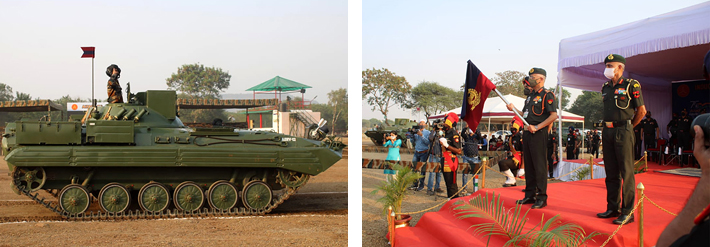
The Defence Research and Development Organisation (DRDO) has developed a number of new combat engineering equipment for the Indian Army. The AERV is developed by Vehicle Research and Development Establishment, Ahmednagar jointly with Research and Development Establishment, Pune, in coordination with C-TEC, as per the qualitative requirements (QRs) of the Indian Army for enabling the combat engineers to conduct reconnaissance operations of water obstacles and boggy patches for execution of engineer tasks with capabilities to carry out reconnaissance and provide real-time updates to force commanders.
The requirement of AERV was long felt especially for our armoured formations and Strike Corps who are mainly operating on the Western border
The AERV is a versatile BMP-IIK amphibious Infantry Combat Vehicle (ICV) fitted with instruments for water reconnaissance, land reconnaissance, navigation and data backup. According to Bharat Electronics Limited (BEL), “The AERV is capable of measuring soil bearing capacity of riverbanks to determine if they are motorable for military vehicle on Go/No-Go basis, which are critical parameters for laying bridges, dry and wet gaps in day and night conditions, slopes and heights of river banks or canals.” The AERV can navigate terrain using Military Grid Co-ordinate System measure and plot underwater beds and water current of rivers or canals, store data from various instruments on the Control Console for further analysis and decision making.
Designed to provide engineering support in both offensive and defensive operations in plains, desert and riverine terrain, the AERV is 90 per cent indigenous. It has no gun and is fitted with specialised equipment, including an echo-sounder, a water current meter, a laser range finder and GPS. On the left rear of the hull, a marking system with 40 rods is fitted. The AERV is equipped with a range of advanced survey instruments to carry out terrestrial and river-bed survey to facilitate construction of assault bridges across water obstacles and a number of other engineering tasks. The onboard equipment can be operated by the crew in hatch down condition from within the confines of the armour protected vehicles. The AERV will enhance existing engineer reconnaissance capabilities of the Indian Army and would be a major game changer in support of mechanised operations in future conflicts.





